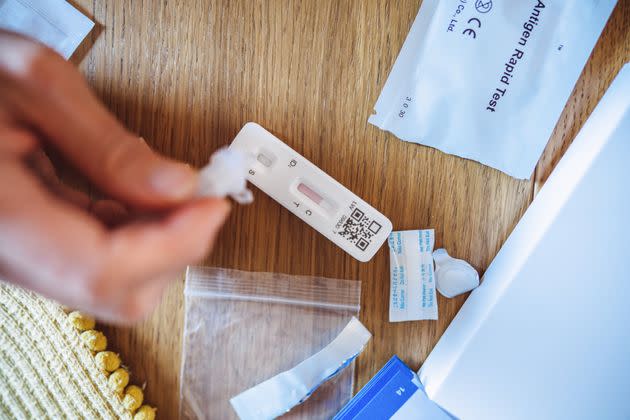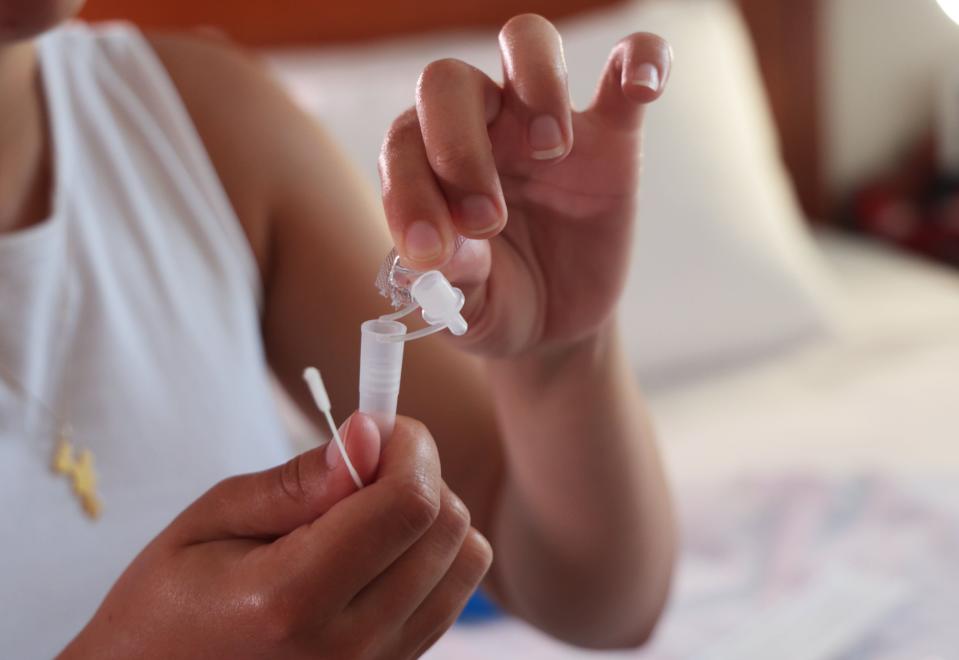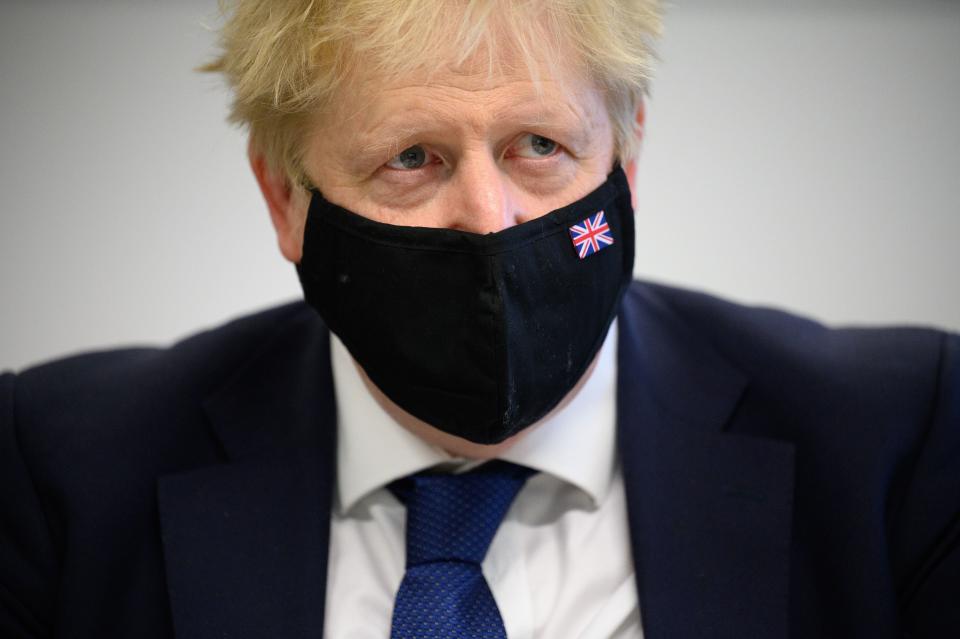When To Stop Self-Isolating For Covid, Regardless Of The Official Guidance

The self-isolation period in England after a positive Covid test will be cut to just five days, the Health Secretary has announced. But what happens if you’re still testing positive?
Sajid Javid told MPs in the House of Commons that UK Health Security Agency (UKHSA) data showed “that around two-thirds of positive cases are no longer infectious by the end of day five”.
He said that, from Monday (January 17), people will be able to take two tests to get out of isolation, “leaving isolation at the start of day six”. This is a reduction from the current seven-day rule, and half the time period of the original 10-day mandatory quarantine period.
The Government has been under pressure to bring the situation in England into line with the United States, where the isolation period has already been cut to five days.
The news will no doubt be welcomed by some who’ve tested positive without symptoms and want to leave isolation sooner. But the idea of a five-day isolation may come as a surprise to those testing positive beyond day 10.
On social media, plenty of people are reporting testing positive on day 11 and beyond. So, is it okay to leave isolation without a negative test?
Day 11 of isolation and still testing positive for this arsehole of a virus. Guess those first days of symptoms weren’t symptoms of covid, either that or I’m dragging things out as per usual… trying to stay positive whilst praying for a negative 😢
— 📚The H Word📚 (@HazelUWriter) January 7, 2022
This is actually insane. I'm on day 11 after testing positive for covid and I am STILL testing positive. Just called 119 and they've said just stop testing after day 11 and go back to work and I'll be fine. I work in a school where I interact with hundreds of people daily...
— Lyz⁷ᴳ (@serendipiteach) January 8, 2022
My children and parents are still testing positive after day 11…
— Marinette (@Marinet31976755) January 9, 2022
The official advice is, yes, you can leave isolation after day 10 even if you’re still testing positive, as long as you either:
do not have any symptoms
just have a cough or changes to your sense of smell or taste – these can last for weeks after the infection has gone.
Those are the official rules, but *should* you isolate for longer?
Professor Lawrence Young, a virologist and professor of molecular oncology at the University of Warwick, says if you test positive after day 10 on lateral flow tests, “this means that you are still likely to be infectious”.
What’s key to consider, is how infectious you might be.
Dr Julian Tang, an honorary associate professor and clinical virologist at the University of Leicester, says how long you should isolate for all depends on the level of risk people are willing to live with, much like seasonal flu.
“The longer the isolation, the less virus you will be shedding after you come out – and the less risk of onward transmission there will be... it’s just a sliding scale,” he tells HuffPost UK.
A shorter isolation period will mean people will begin mixing again while shedding a higher viral load, which may result in more onward transmission. But this risk needs to be balanced against the benefits of getting people back to work, Dr Tang says.
“Clearly the type of work matters in this context,” he says. “One could reasonably argue that healthcare workers having direct face-to-face vulnerable patient contact should have longer isolation, compared to others who do not have regular contact with vulnerable individuals at their workplace.”
How long you choose to isolate after you’re officially allowed out of isolation ultimately comes down to a personal choice. If you’re testing positive, you might choose to avoid unnecessary social engagements, for example, particularly if you’re visiting vulnerable loved ones, just to err on the side of caution.
Professor Paul Hunter, an expert in infectious diseases at the University of East Anglia, reminds us there’s a window of peak infectiousness after catching Covid.
“At the start of the pandemic we knew that people could shed virus from up to four days before to four or even more weeks after developing symptoms,” he says. “But that people were mainly infectious from two days before to three days after symptoms.”
A study from Japan, which is yet to be peer-reviewed, suggests peak shedding for Omicron may be a couple of days later than with previous variants and the risk of transmitting infection may last a bit longer, he adds.
But will reducing isolation from seven to five days affect the trajectory of the epidemic in the UK?
Prof Hunter says the trajectory will change “by some, but probably not by that much”. As he explains: “Currently we are only picking up about a third of infections in the UK, so isolation of known positives will do nothing to stop this risk. This is less than for Delta which was about 40-45% and probably reflects more milder cases.”
Additionally: “People are still likely to be infectious before symptoms develop and certainly before they know they have Covid so even now we probably only stop about a half of infections in people who follow isolation rules, even with the new data on Omicron. And then of course there is the unknown but substantial proportion of people who don’t follow the rules.”
What do experts think about the a five-day isolation rule?
Ahead of the announcement, Prof Hunter said he would support a reduction in the isolation period for people who are no longer symptomatic. “That last bit is important,” he adds. “I have not argued for people to return to work on day six if they are still sick.”
However, Prof Young is against the cut. “Reducing the self-isolation period for people who test positive for Covid-19 from seven days to five is not based on scientific evidence but on concerns about the impact of staff absences,” he says.
“A recent study has shown that peak infectiousness with Omicron occurs at three to six days after diagnosis or symptom onset. Thus the current approach adopted in the UK of seven days isolation with two consecutive negative lateral flow tests makes sense. Reducing the self-isolation period to five days runs the risk of highly infectious people returning to work or school, particularly if lateral flow tests are not used.”
This article originally appeared on HuffPost UK and has been updated.

 Yahoo News
Yahoo News 




